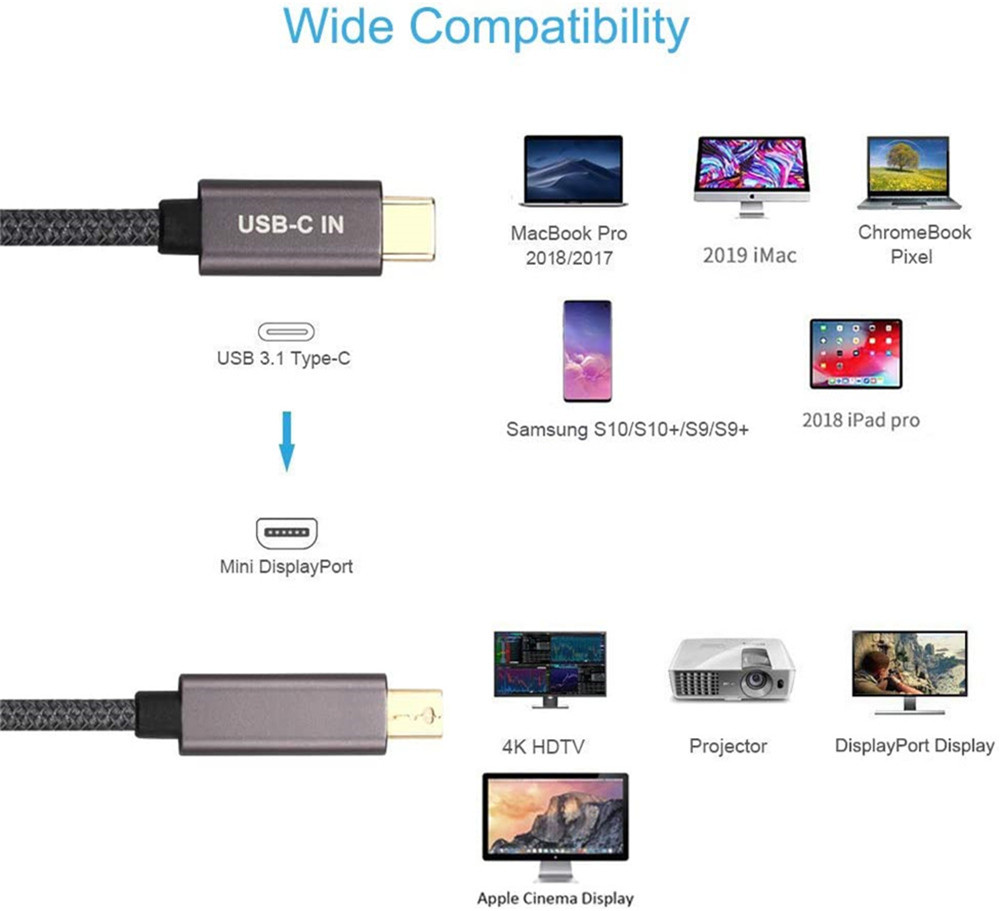In the ever-evolving world of technology, connectivity options are becoming more diverse to suit the needs of a wide range of devices and users. One option that is gaining popularity is the Mini DisplayPort cable. But what exactly is a Mini DisplayPort cable? How is it different from other types of cables? This article aims to provide a comprehensive overview of the Mini DisplayPort cable, its features, and its applications.
Understanding Mini DisplayPort
Mini DisplayPort is a compact version of the DisplayPort interface, developed by VESA (Video Electronics Standards Association). Mini DisplayPort was introduced by Apple in 2008 to provide high-quality digital audio and video connections in a smaller form factor. It is commonly found in a variety of devices, including laptops, desktops, and monitors, especially those produced by Apple.
The Mini DisplayPort cable is used to connect devices such as laptops to external displays, projectors, or TVs. It supports high-definition video and audio, making it an ideal choice for users who demand an exceptional visual and auditory experience. The cable can transmit video resolutions up to 4K 60Hz, making it essential for gamers, graphic designers, and anyone who values high-quality visuals.
Main features of Mini DisplayPort cables
• Compact Design: Mini DisplayPort’s smaller size makes it a convenient choice for portable devices. It allows manufacturers to create thinner and lighter laptops without sacrificing connectivity options.
• High Bandwidth: Mini DisplayPort cables support high bandwidth, which can quickly transfer large amounts of data. This feature is especially useful for high-resolution displays and multi-monitor setups.
• Versatility: Mini DisplayPort is compatible with a variety of adapters, allowing users to connect to HDMI, DVI, and VGA monitors. This versatility makes it a popular choice for users who need to connect to different types of monitors or projectors.
• Audio Support: In addition to video, the Mini DisplayPort cable can also transmit audio signals, eliminating the need for a separate audio cable. This feature simplifies setup and reduces cable clutter.
• Daisy Chain: One of the outstanding features of Mini DisplayPort is that it supports daisy chaining. This means that multiple monitors can be connected in series to a single Mini DisplayPort output, thus expanding the workspace without the need for multiple ports.
Applications of Mini DisplayPort Cable
Mini DisplayPort cables are used in a wide variety of applications, including:
• Professional Workstations: Graphic designers, video editors, and other professionals often use Mini DisplayPort cables to connect high-resolution monitors to their workstations to ensure accurate color representation and detail.
• Gaming: Gamers can benefit from the high refresh rates and resolutions supported by Mini DisplayPort cables for a smoother, more immersive gaming experience.
• Presentations: In educational and corporate environments, Mini DisplayPort cables are often used to connect laptops to projectors or large displays for presentations, ensuring clear visuals for the audience.
• Home Entertainment: Many users use a Mini DisplayPort cable to connect their laptop to a TV or home theater system for streaming high-definition content.
Its compact design, high bandwidth, and compatibility with a wide range of display types make it an essential tool for professionals, gamers, and everyday users. As technology continues to advance, the Mini DisplayPort cable remains a reliable choice for those seeking high-quality audio and video connections. Whether you’re looking to enhance your workspace or enjoy a cinematic experience at home, understanding the features of the Mini DisplayPort cable can help you make a smart connection choice.
Post time: Nov-23-2024




